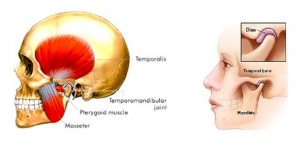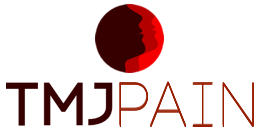THE SYMPTOMS OF TMD AND OSA
Headaches, clicking jaw, malocclusion (misalignment of teeth), and mandibular (lower jaw) displacement are all associated with temporomandibular joint disorder (TMD). However, these symptoms often occur in patients with Obstructive Sleep Apnea (OSA) as well. Research in The Journal of Sleep determined in 1993 that nocturnal headaches may be caused by temporomandibular joint disorder or triggered by Sleep Disordered Breathing—“ with very similar clinical manifestations but very different therapeutic implications.”
CAUSES OF THE SYMPTOMS
The temporal muscles of the forehead play an important part in the positioning and closing of the jaw. If your occlusion (bite) is not correct, it can lead to abnormal tension in these muscles – and cause tension type headaches, toothaches, and Temporomandibular Joint Disorder (TMD)

TMD: “THE GREAT IMPOSTER”
TMD is called “The Great Imposter.” The symptoms can both overlap and mimic those of Obstructive Sleep Apnea. Some dentists believe that TMD is partly the existence of a TMJ problem and partly the manifestation of a Sleep Disordered Breathing problem, such as Sleep Apnea. The simplest way to understand the connection: the bruxism (teeth grinding) or jaw shifting associated with Sleep Disordered Breathing occurs when sleeping patients are trying unconsciously to find the best possible positioning of their airway. These motions may inflame the temporomandibular joint or exacerbate a problem with the joint that was pre-existing.
CAUTION!
If you believe you have Temporomandibular Joint Disorder, I suggest you find a dentist to screen you for Obstructive Sleep Apnea. Find one who has taken dental CE courses and is trained in Dental Sleep Medicine. Don’t let “the Great Imposter” trick you into believing that your problem is solely a TMD one. It may not be.
“Oral Appliances should be fitted by qualified dental personnel who are trained and experienced in the overall care of oral health, the temporomandibular joint, dental occlusion and associated oral structures.”
– American Academy of Sleep Medicine.


